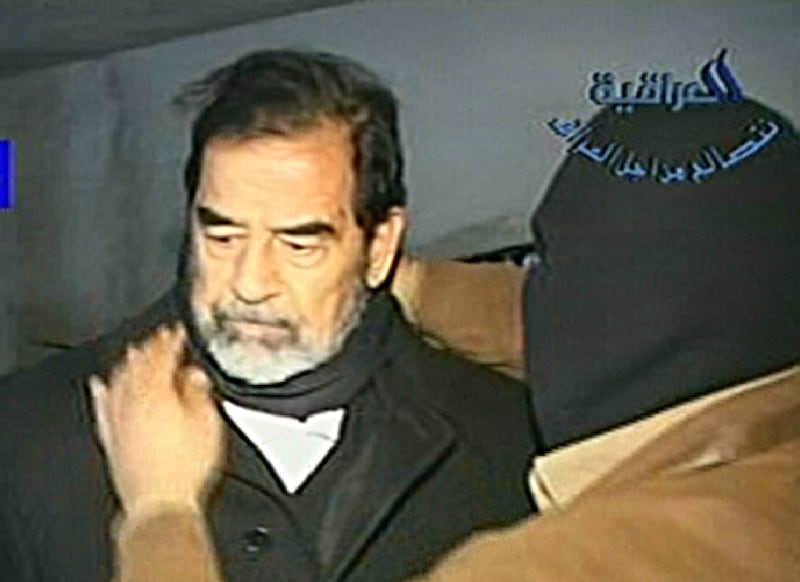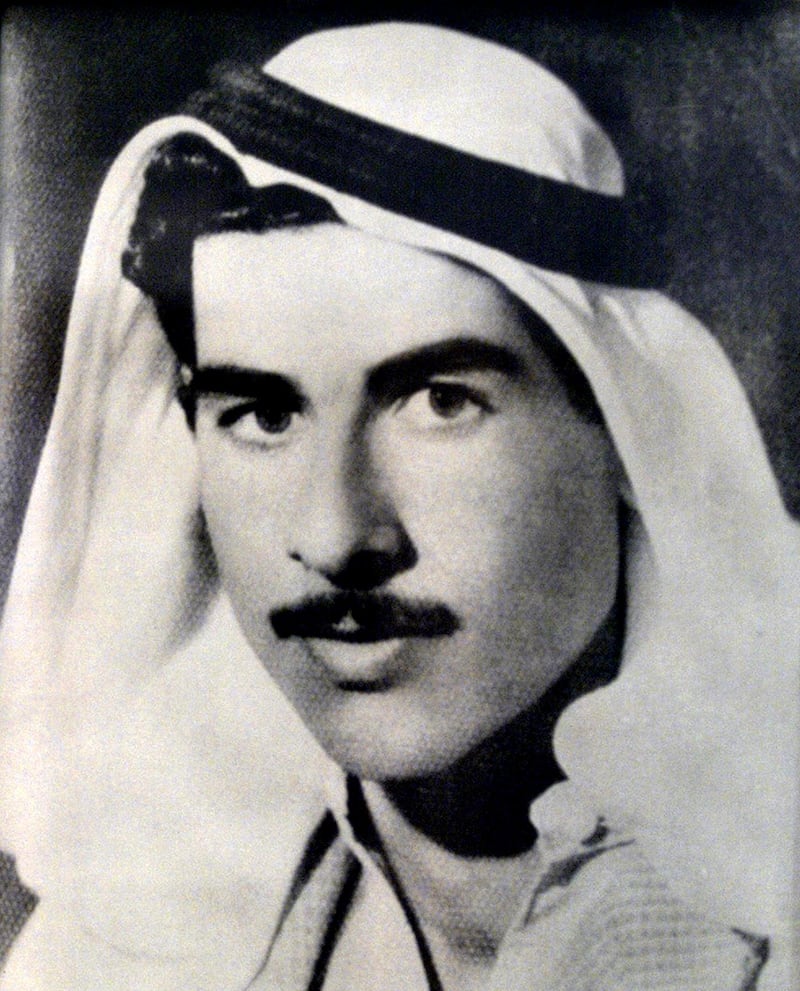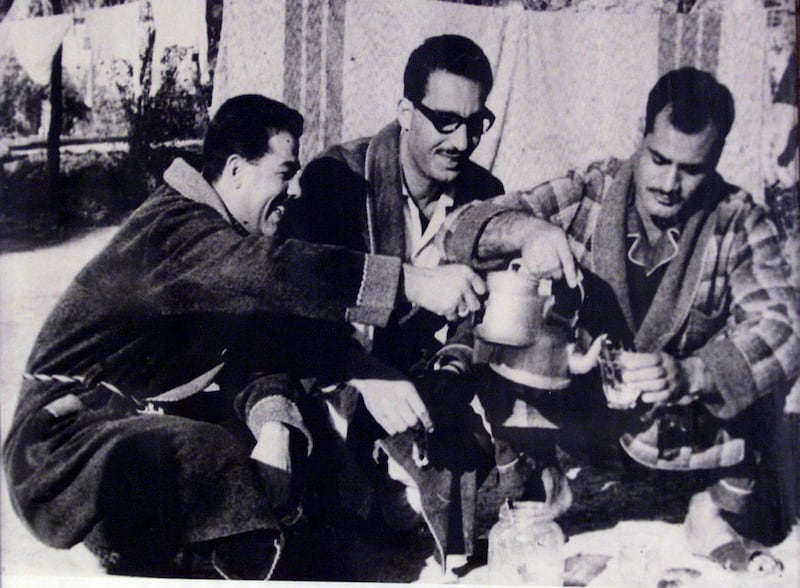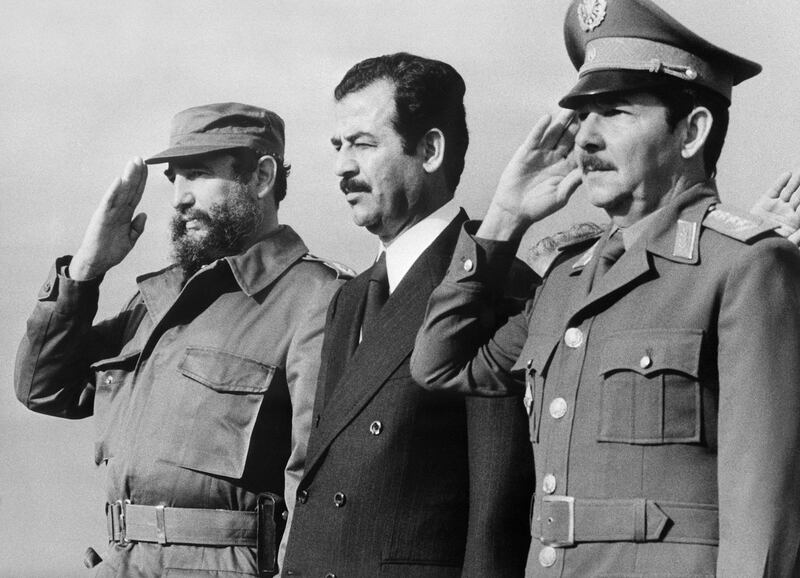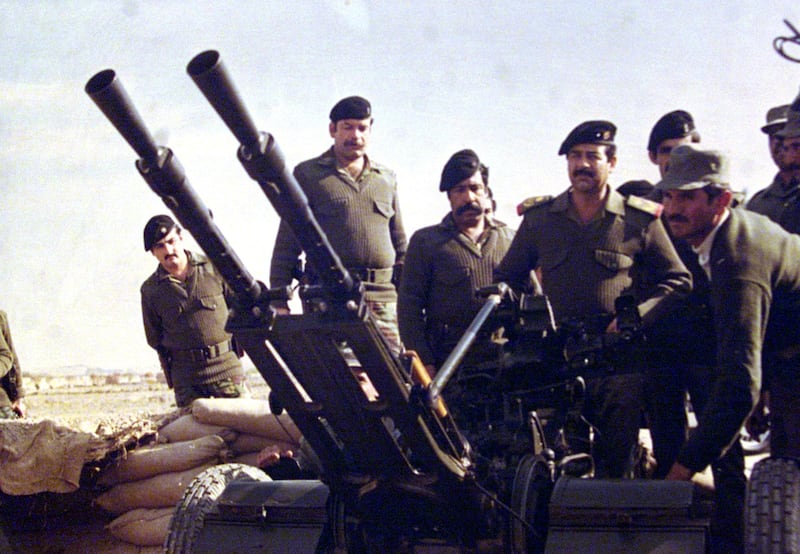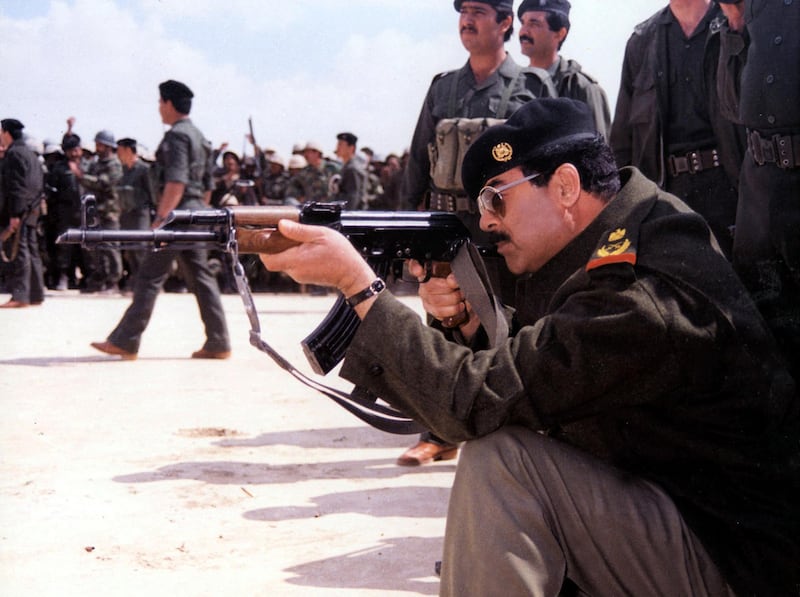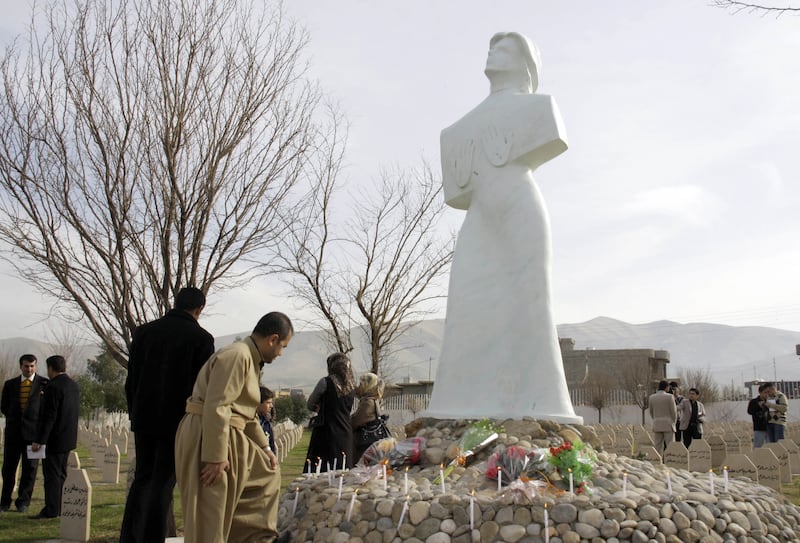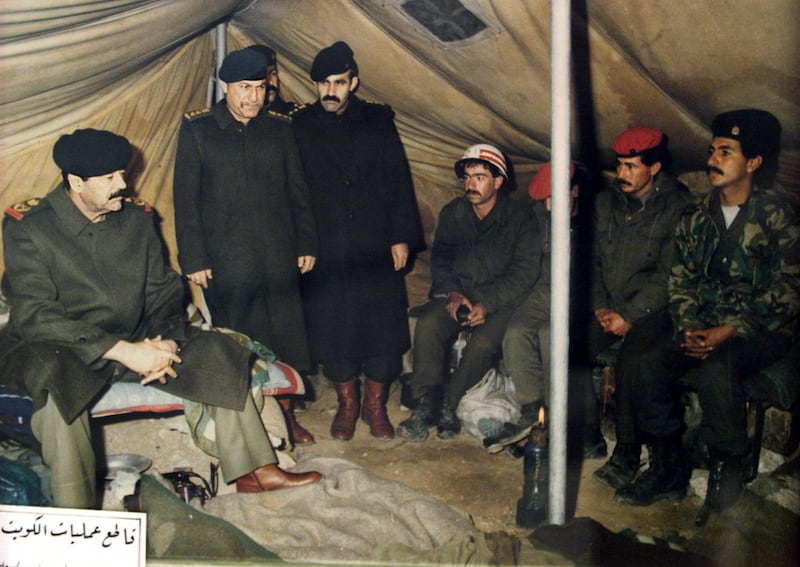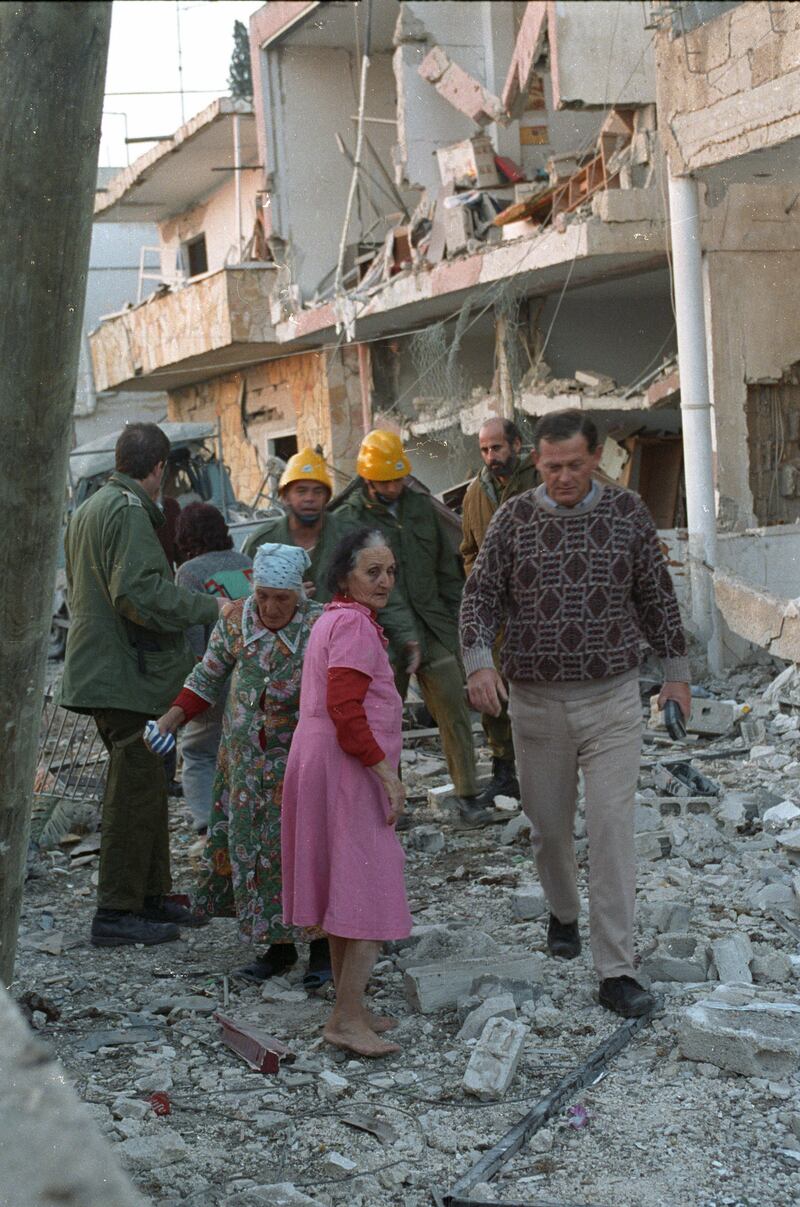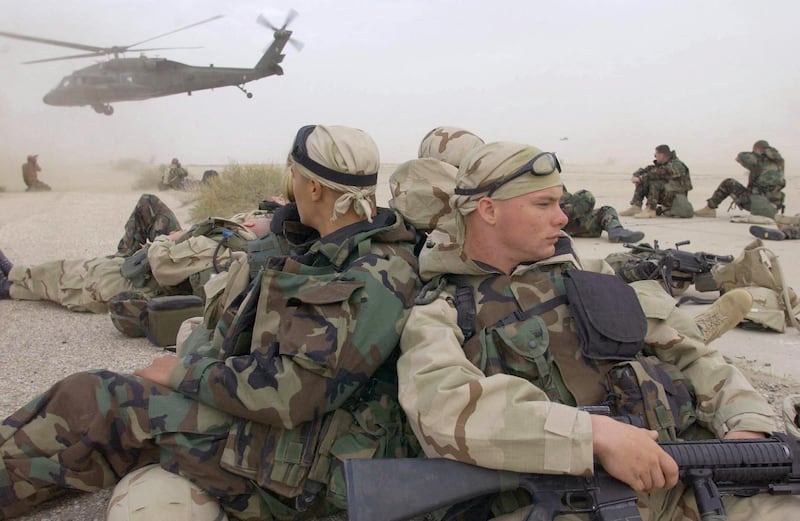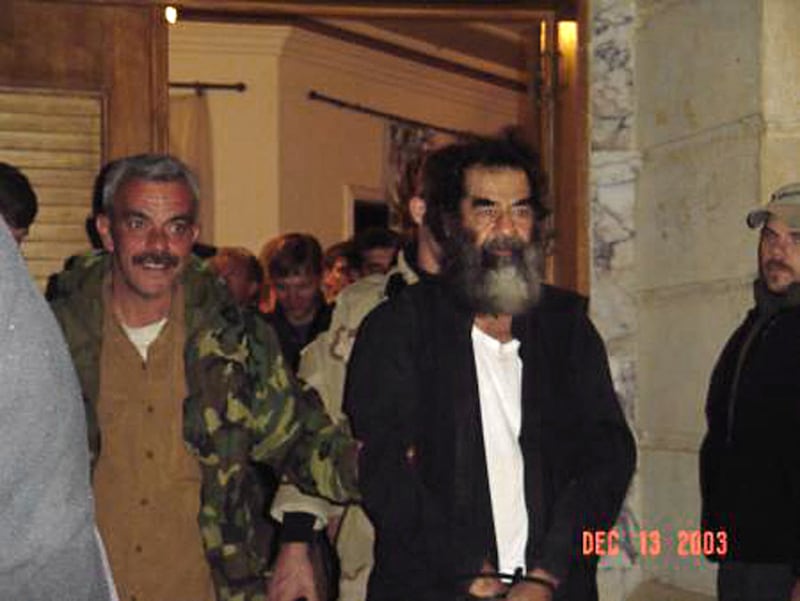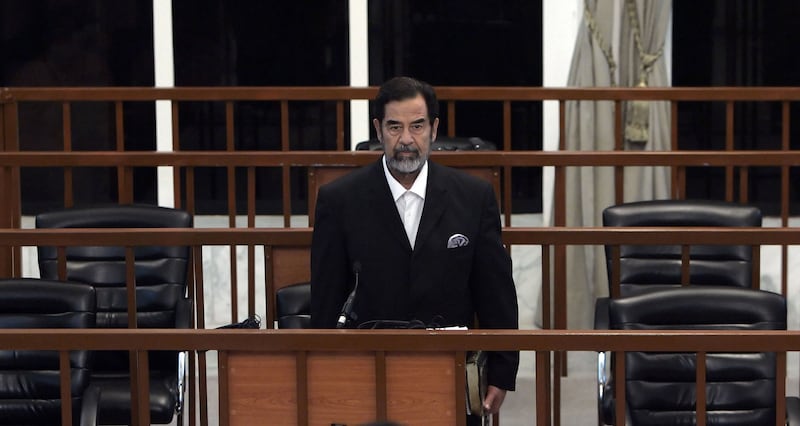Fifteen years after the execution of Iraq’s former dictator Saddam Hussein, Iraqis are still divided about his rule and legacy.
“Saddam’s era saw big achievements and setbacks in all fields,” Baghdad resident Riyadh Ahmed Salih told The National.
“But after him Iraq is literally collapsed and we have been seeing one setback after another,” said Mr Salih, 68, a retired teacher.
After nearly 35 years in power, Saddam Hussein was toppled by a US-led invasion in 2003, ending the reign of a brutal Sunni-led regime that carried out atrocities against Iraqis and neighbouring countries.
Nine months after the invasion, Saddam was found by US troops in an underground hideout near his hometown of Tikrit, north of Baghdad.
Between October 2005 and late 2006, following initial interrogations, the former dictator and his henchmen were put on trial before Iraq’s high tribunal, set up by the Americans to try major crimes committed by regime figures.
Saddam was executed by hanging in Baghdad on the morning of December 30, 2006, the first day of Eid Al Adha. The timing was seen by many as a deliberate provocation to his supporters.
He was convicted of crimes against humanity for the murder of nearly 150 Shiite villagers who were executed after a failed assassination attempt against him in 1982.
“Saddam is the one who caused all the sufferings we are living today,” said Zainab Mohammed, 55, a housewife in Baghdad.
“He was a reckless leader who took us from one war to another, leaving behind an army of widows and tonnes of social problems in society," Ms Mohammed said.
"In each house there is a scar caused by Saddam."
A man from Saddam’s hometown Tikrit disagreed.
“President Saddam Hussein was faithful to Iraq and its people. He served them and maintained their dignity,” said the man, who, concerned for his safety, identified himself only as Abu Omar.
“During his reign and even during the UN-imposed economic sanctions, we had hospitals, schools and public services work and serve the people better than today,” he said.
“What do we have now? Only blood, corruption, politicians who can’t fix a light in a school or pave a street. They only know how to funnel the government resources to their pockets.”
Born in 1937, Saddam joined the ranks of the now outlawed Baath Party's Iraq branch in the early 1950s. The Baath Party was founded in 1947 in Damascus, Syria and established branches in Arab countries including Iraq.
In 1959, he led a failed operation to kill president Abdul Karim Qassim who took power when the monarchy was overthrown in 1958. Qassim was overthrown in 1963.
After the 1968 coup in which Saddam played a key role, he was chosen by the president, Ahmed Hassan Al Bakr, to be vice president and deputy chairman of the Revolutionary Command Council and was responsible for Iraq's security services.
He became Iraqi president in 1979.
Some Iraqis commemorated his death anniversary on social media.
One Twitter user under the name of Abu Ali Al Najafi posted a video of a Christmas tree decorated with Saddam’s picture. On the ground next to the tree, pictures of Shiite politicians who assumed power after 2003 are arranged, as well as Shiite religious leaders who have played leading roles in post-Saddam Iraq, with shoes on them – a grave insult in Arab culture.
The accompanying message read: “Here’s the hero Saddam, may God have mercy on your soul.
“And you are the criminals and killers," it said.
Others celebrated the anniversary of Saddam's death as a "great day" and praised former prime minister Nouri Al Maliki for signing the execution order.
"It is a great day that marks the fall of Hadam the tyrant," a man identified as Abu Liwa said on Twitter, playing with the words by using "Hadam", which means "The Destroyer" in Arabic, instead of "Saddam".
"May God bless your right hand Nouri Al Maliki," Yassin Al Soudani tweeted along with a picture of Mr Al Maliki signing his name as Saddam hanged.
"The history will remember your honourable signature," he wrote.
